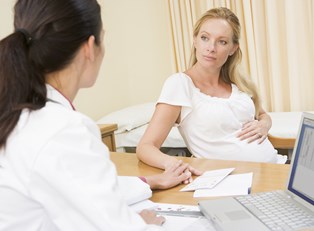Endometriosis is a condition that occurs when tissue that normally grows inside the uterus begins to develop on the outside of the organ. This phenomenon can lead to extreme pain for patients and may affect their ability to become pregnant in the future. It’s estimated that endometriosis affects roughly 10% of the female population worldwide.
While this condition is not considered life-threatening, it can significantly impede a woman’s quality of life if her symptoms are severe enough. The following is an overview of endometriosis, including its symptoms, causes, risk factors, treatment, and prevention.
Endometriosis Symptoms
Pelvic pain and cramping are the most common symptoms associated with endometriosis. Many times they occur in conjunction with menstruation (known as dysmenorrhea), but they may also happen during sex or when using the bathroom. Other symptoms include heavy bleeding during and between periods, fatigue, infertility, bloating, and in some instances, infertility.
Strangely enough, the severity of a person’s symptoms does not necessarily correlate with the severity of the condition. In some cases, a woman with only mild endometriosis will experience frequent bouts of pain, while a woman with a more extensive case may experience little to no pain.
Endometriosis Causes
Researchers are still unsure as to the exact cause of endometriosis. However there are some hypotheses as to why it develops. These include:
- Immune system difficulties that prevent endometrial tissue from being shed normally
- The transportation of endometrial cells to other parts of the body by the bloodstream
- The development of endometrial tissue outside of the uterus that occurs before birth
- The unintentional movement of endometrial cells during certain surgeries, such as a C-section
Endometriosis Risk Factors
While an exact cause for endometriosis has not been discovered, there are certain factors that can increase a woman’s risk of developing the condition. For example, women with a family history of endometriosis are more likely to develop it than those who don’t. Additionally, women with an unusual cervix structure, women who have never given birth, and women with a history of pelvic problems may also have a higher risk of developing endometriosis than others.
Endometriosis Treatments
There is currently no definitive cure for endometriosis. Instead, treatment will normally revolve around helping women manage their symptoms. In most cases, this typically begins with pain-relieving medications, especially for patients whose symptoms are relatively mild. Over-the-counter drugs such as ibuprofen or naproxen can be effective, but in certain cases a woman may require prescription-strength products.
When these medications prove ineffective, doctors may recommend hormone therapy. During menstruation, endometrial tissue thickens and bleeds, which plays an important factor in the pain associated with endometriosis. Hormone replacements can help reduce the growth of these cells. However, not all women experience success with this treatment approach, and it’s common for symptoms to return when the injections are stopped.
In extreme cases, surgery may be necessary to treat endometriosis. However, this is primarily recommended for women who plan on becoming pregnant in the future, as the condition can lead to infertility problems. Thanks to advances in medical technologies, this surgery is only mildly invasive and is commonly performed by inserting a small camera into the abdomen.
Endometriosis Prevention
Unfortunately, there are no prevention methods that have been shown to completely stop the development of endometriosis. However, there is some research to indicate that long-term use of hormonal birth control can help regulate the level of endometrial tissue that develops around the uterus.



